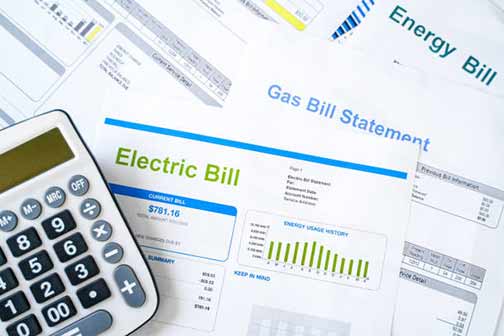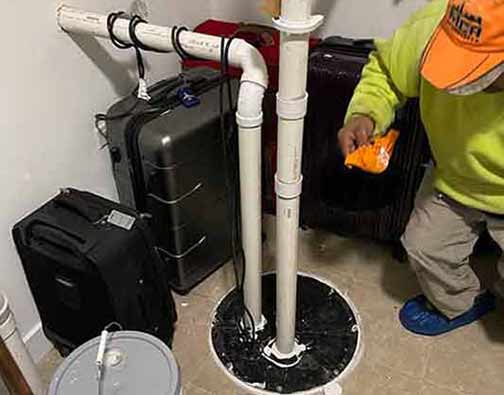Understanding the Role of an Ejector Pump
An ejector pump is a critical component in many homes, particularly those with basements or lower levels that are below the main sewer line. Its primary function is to pump wastewater and sewage from these lower levels up to the main sewer line, ensuring that waste is properly disposed of. Without a functioning ejector pump, homeowners could face significant issues, including sewage backups and water damage.
Frequent Cycling of the Ejector Pump: A Sign of Struggle
One of the first signs that your ejector pump may need replacement is if it begins to cycle on and off more frequently than usual. This could indicate that the pump is struggling to maintain proper pressure or that it is unable to handle the volume of wastewater being produced. Frequent cycling can lead to increased wear and tear on the pump, ultimately shortening its lifespan. In addition, this constant cycling can cause the motor to overheat, potentially leading to a complete failure of the pump.
Unusual Noises Coming from the Ejector Pump: What They Mean
Ejector pumps are designed to operate quietly, so any unusual noises such as grinding, rattling, or banging should be taken seriously. These sounds could be a sign of internal damage or debris caught in the pump. Ignoring these noises can result in more severe damage and potentially lead to a complete pump failure. For instance, grinding noises might indicate that the impeller is damaged or that there is a foreign object inside the pump, while rattling could suggest loose components or worn-out bearings.
Visible Leaks Around the Ejector Pump: Causes and Consequences
Leaks around the ejector pump are a clear indication that something is wrong. This could be due to a crack in the pump housing, a loose connection, or a failing seal. Water leaks can cause significant damage to the surrounding area and should be addressed immediately to prevent further issues. Additionally, leaks can lead to mold growth and structural damage to your home, posing health risks and potentially resulting in costly repairs.

Foul Odors Emanating from the Ejector Pump Area: Health Risks and Solutions
A properly functioning ejector pump should not produce any foul odors. If you notice a strong sewage smell coming from the pump area, it could indicate that the pump is not effectively removing waste or that there is a leak allowing sewage to escape. This not only creates an unpleasant environment but also poses health risks to the occupants of the home. Exposure to sewage can lead to respiratory issues, skin infections, and other health problems, making it essential to address any foul odors promptly.
Slow Draining Fixtures in the Home: A Symptom of Ejector Pump Failure
If you start to notice that sinks, toilets, and other fixtures in your home are draining more slowly than usual, it could be a sign that your ejector pump is not working efficiently. This could be due to a blockage in the pump or a decrease in its pumping capacity. Slow draining fixtures can lead to backups and potential water damage if not addressed promptly. It’s important to investigate the cause of slow drainage and determine if the ejector pump is the source of the problem.
Frequent Clogs in the Plumbing System: When to Blame the Ejector Pump
Frequent clogs in your home’s plumbing system can be another indication that your ejector pump is failing. A pump that is not functioning properly may not be able to handle the volume of waste being produced, leading to clogs and backups. If you find yourself constantly dealing with clogged drains, it may be time to consider replacing your ejector pump. Persistent clogs can also result in increased pressure on the plumbing system, potentially causing pipes to burst and leading to extensive water damage.
Age of the Ejector Pump: Knowing When It’s Time
Like all mechanical devices, ejector pumps have a limited lifespan. Most pumps are designed to last between 7 to 10 years, depending on usage and maintenance. If your pump is approaching or has exceeded this age range, it may be time to start considering a replacement, even if it is not currently showing signs of failure. Proactively replacing an aging pump can help prevent unexpected breakdowns and costly repairs. Regular maintenance and inspections can also help extend the life of your pump and ensure it continues to operate efficiently.

Increased Energy Bills: The Hidden Cost of a Failing Ejector Pump
An ejector pump that is struggling to operate efficiently may consume more energy, leading to higher utility bills. If you notice a sudden increase in your energy costs without a clear explanation, it could be due to a failing ejector pump. Replacing the pump with a newer, more efficient model can help reduce energy consumption and lower your bills. In addition to saving money, a more efficient pump can also reduce your environmental impact by decreasing your overall energy usage.
Frequent Need for Repairs: When Replacement is More Cost-Effective
If you find yourself frequently calling a plumber to repair your ejector pump, it may be more cost-effective in the long run to replace the pump entirely. Constant repairs can add up quickly, and a new pump will likely provide more reliable performance and peace of mind. Investing in a new pump can also help prevent the inconvenience and stress associated with frequent breakdowns and emergency repairs.
Why Prompt Action is Essential: Preventing Major Issues
Addressing the signs of a failing ejector pump promptly is crucial to prevent more serious issues from developing. A malfunctioning pump can lead to sewage backups, water damage, and health hazards due to exposure to waste. Additionally, delaying replacement can result in higher repair costs and more extensive damage to your home. Taking prompt action can help ensure that your home remains safe and functional, and can save you money in the long run by preventing more severe problems.
Choosing the Right Replacement Ejector Pump: Factors to Consider
When it comes time to replace your ejector pump, it’s important to choose the right model for your needs. Consider factors such as the size of your home, the volume of wastewater produced, and the specific requirements of your plumbing system. Speaking with a professional plumber can help ensure that you select the best pump for your situation. Additionally, consider the energy efficiency and durability of the pump, as these factors can impact both your utility bills and the longevity of the pump.
Professional Installation and Maintenance: Ensuring Longevity and Performance
Proper installation and maintenance of your new ejector pump are essential for its longevity and performance. Hiring a professional plumber to install the pump ensures that it is set up correctly and meets all local codes and regulations. Regular maintenance, such as cleaning and inspecting the pump, can help prevent future issues and extend the life of the pump. It’s also important to schedule routine check-ups with a professional to catch any potential problems early and address them before they become major issues.
Conclusion: Staying Proactive with Your Ejector Pump
Recognizing the signs that your ejector pump needs replacement is crucial for maintaining a safe and functional home. By paying attention to symptoms such as frequent cycling, unusual noises, leaks, foul odors, slow draining fixtures, frequent clogs, increased energy bills, and the age of the pump, you can take proactive steps to address issues before they become major problems.
Prompt action and professional assistance are key to ensuring that your ejector pump continues to operate efficiently and effectively. By staying vigilant and addressing any issues promptly, you can protect your home from potential damage and ensure that your plumbing system remains in good working order.


